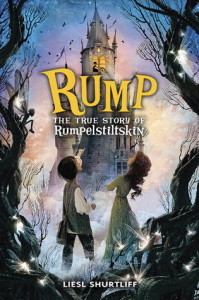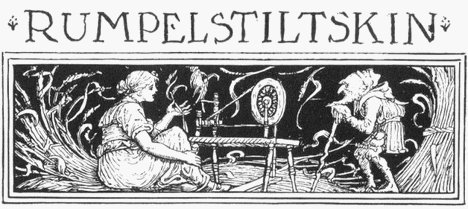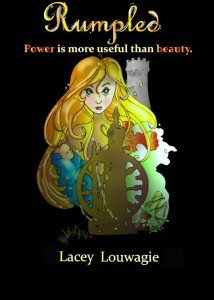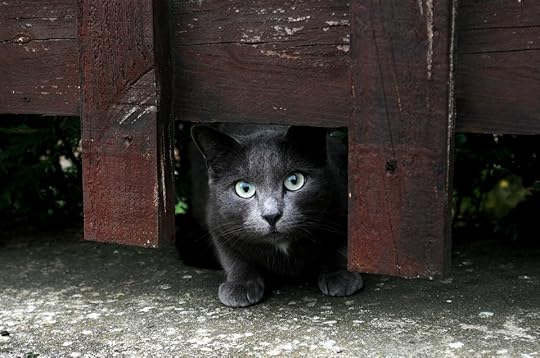Lacey Louwagie's Blog, page 5
September 25, 2016
Writing Book Review: Wild Mind by Natalie Goldberg
 Wild Mind: Living the Writer’s Life by Natalie Goldberg
Wild Mind: Living the Writer’s Life by Natalie Goldberg
My rating: 4 of 5 stars
Around the Year Reading Challenge Item #21: A book from the Goodreads recommendations page
The philosophy behind this book is pretty much the same as that powering Writing Down the Bones: Freeing the Writer Within, but I found this book to be a lot more enjoyable. Goldberg’s tone is a bit less pretentious and her advice, overall, feels more grounded and less self-involved. The writing prompts vary from the whimsical to the thoughtful to the practical, and I felt a little smug to see her recommending several practices that I already incorporate. The book is full of analogies to the writing life to make it seem a little less mystical, and it includes a healthy dose of author humility. While less exuberant than “Bones,” the advice in this book is both inspiring and sustainable.
A couple things did bug me about the book. I felt that Goldberg included far more examples of her own writing than were needed to convey the sense of what she was advising; these felt self-indulgent. I also can’t help notice that in many of these, “free yourself and write” advice books, the authors do not have traditional employment — either they are supporting themselves with their writing, or they have some mysterious source of income squirreled away somewhere, and the advice about letting writing permeate every part of your life can feel unattainable when you are squeezing it in around the rest of your life. Goldberg does address this in several places, but there’s a sense that she doesn’t feel it down in her bones when she writes about quitting her one-day-a-week paid gig because it interferes with her writing mojo. Yup, jobs are hella inconvenient.
September 19, 2016
Retelling Book Review: Longbourn by Jo Baker
 Longbourn by Jo Baker
Longbourn by Jo Baker
My rating: 4 of 5 stars
I think the people who dislike this book because they don’t like the way Elizabeth or other Bennets act in it really need to venture out of their protective bubble.
There’s a reason the characters in Longbourn are mentioned only in passing in Pride and Prejudice: it’s because the upper classes barely noticed that the servant class existed. The portrayal of the Bennets in this book seems perfectly in line with their portrayal in the book; they are kind to the servants, they are not monsters, but they have a sense of entitlement — which is barely noticed when the story is told from their perspective, but which rankles a bit when you see it through the eyes of those who must work to make sure the Bennets continue to receive what they feel entitled to, whether it is new shoe roses despite the rain or three warm meals each day.
Although I consider myself a Jane Austen fan and I like the romance between Elizabeth and Mr. Darcy, I get easily irritated by the Jane-ites that fawn over the romance in the books as though Austen was merely a writer of Harlequins and not a woman who was attempting to critique the society in which she lived even as she upheld it. And I have limited patience for books such as Austenland and The Jane Austen Book Club that seem fixated on “cute-sy-fying” Austen.
What I loved about Longbourn is that it brought Regency England back down to earth. There are cold mornings, chamber pots to be emptied, a war in Spain, wealth that is acquired through connections with the slave trade. This should not “tarnish” our view of the original works but instead deepen it with a more complete appreciation of their full context. This book is rich in sensory and historical details and delves fully into the lives of those who are often considered disposable and forgettable by history — and yes, by Austen herself, whether you like it or not.
Although it does have some similar themes to P&P, it is not too obvious, nor does it cripple itself by trying too hard to emulate the source material. At the same time, this book is eminently faithful to the original — all the events are the same — and only the perspectives are different. This time, the Bennets are in the background, and while this might be disappointing to those hoping to slather over a new take on Elizabeth and Darcy’s love, I found it to be perfectly acceptable because the main characters here are fully realized enough that we don’t need to rely on an old, beloved story to make it through. I also appreciated that, because this book was written much later than P&P, it could more fully explore issues that would have been improper to write about then, such as just how creepy Wickham might have been, what happened when children were born out of wedlock, etc.
It was a little slow to start, and I found my interest waning in the section about James near the end, which took the action away from the core group of women we had been following for the rest of the book. But it is definitely a worthwhile read, especially if you enjoy well-rendered, intimate historical fiction, and whether you love, hate, or are indifferent to its source material.
September 13, 2016
Persistence Over Talent
 “To be persistent is way more important than talent — we all know talented writers who will never publish because they won’t get in the chair and write the book. I am not the most talented person by miles, but I am incredibly determined.” – Susan Mallery, Writer’s Digest Interview, May/June 2015
“To be persistent is way more important than talent — we all know talented writers who will never publish because they won’t get in the chair and write the book. I am not the most talented person by miles, but I am incredibly determined.” – Susan Mallery, Writer’s Digest Interview, May/June 2015
August 15, 2016
Retelling Book Review: Jem & the Holograms #1- Showtime
 Jem and The Holograms #1 by Kelly Thompson
Jem and The Holograms #1 by Kelly Thompson
My rating: 5 of 5 stars
Book Riot Read Harder Challenge Item: A non-superhero comic that debuted in the last 3 years
I am not afraid to admit that nostalgia may have inflated my rating.
However, it’s not as if I’d fawn over any Jem-related property. My reaction to the movie reboot was far from positive.
This reimagining of the JEM canon works because it strikes the perfect balance between nostalgia and modern sensibilities. Although the character designs have been updated, their personalities have remained intact while receiving greater depth; story threads that were only subtexts in the original series are brought out into the open here. Also, I have nothing but good to say about the update to the character designs — whereas all the female characters in the original essentially shared the exact same fashion-plate body, in this incarnation we see body diversity along with the ethnic diversity that the show always managed to pull off. Jerrica and the gang come off as somewhat “younger” than they do in the original, but I think that is partially because the original was aimed at kids, where an adult is just an adult, whereas this is aimed at older readers who know how rare it is for someone to be CEO of their own record label at age 23.
This does make me wonder how new readers would treat the more fantastical elements of this story, couched as they are in a more realistic setting without a lot of explanation about how they work. But perplexing newcomers is a price I am willing to pay to keep some of the iconic story elements — ahem, SYNERGY — from the original intact.
Also, there are some things that make MORE sense in this incarnation. We’re never really given an upfront reason for the creation of JEM in the original — why did Jerrica change her identity while everyone else remained themselves? As the original series goes on the viewer starts to perceive that Jerrica needs her alter-ego to “cut loose,” but this is handled in a more upfront manner in the comic: Jerrica, while a talented musician and songwriter, has debilitating stage fright and can only perform when hiding behind the persona of JEM.
And yeah, there are definitely some cheesy moments that in most cases would make me roll my eyes — but when they appear I ask myself, “Would this sort of thing have happened on the cartoon?” When I realize the answer is yes, I just have to sort of shake my head and smile indulgently. And I love all the little details here, especially when it comes to Pizazz. She comes across as a bit more “mean girl” and a bit less “loose cannon” than in the cartoon, but there are these sweet “softening” touches that just make you want to know more about who she REALLY is — who are the science fiction action figures next to her bed? She’s also been given a Siamese cat which seems a perfect fit (Siamese are known for being one of the most “prickly” and temperamental breeds), and in the final frame, just the hint of a tear in her eye as she rants about Jem and the Holograms stealing the spotlight.
The nascent love stories, both between Kimber and Stormer and Jerrica and Rio are sweet, although I’m worried that Rio might discover the dual identity too early on in the series. I will be disappointed if the comic ends up matching the movie in that regard, both because Jerrica’s secret identity provided such an ongoing sense of tension in the original (where Rio never DID find out) AND because dudes with secret identities are allowed to hold onto them (and the power it gives them) for decades against all odds. I hope the new writers will give Jem the same courtesy; in so many other ways they’ve kept this “true” to the things that made the Jem series so beloved.
I’ve already ordered the next two volumes. I hardly ever purchase books new, but when it comes to series like this that are so close to my heart, I just want to keep throwing money at them.
July 29, 2016
On Creation
“I was in the middle of writing and did not want to go anywhere, much less face my kin, who were in the middle of childbearing and child rearing. Creating a book was not a legitimate pregnancy.” – Terry Tempest Williams, “When Women Were Birds.”
July 11, 2016
Need a Writing Boost? Shake Up Your Schedule
 I haven’t blogged here in a long time, and usually that means I’ve been having trouble finding enough time for writing, period. Happily, that has not been the case these last few weeks. Instead, I have been enjoying the forward momentum that comes from getting in a little bit of writing time almost every day.
I haven’t blogged here in a long time, and usually that means I’ve been having trouble finding enough time for writing, period. Happily, that has not been the case these last few weeks. Instead, I have been enjoying the forward momentum that comes from getting in a little bit of writing time almost every day.
Because my “day job” involves pretty much nothing but writing (and reading legal documents), and because my workload is unpredictable (no way to plan for when news breaks), I’ve struggled to keep up momentum on my long-term writing projects over the last couple years. This is because I’d feel antsy to get going on work in the morning, not ever knowing how much I’d have for the day, and by the end of the day I’d often be either too exhausted to give my writing a good go, or I’d end up working later than I intended and squeezing out time I’d meant for writing.
Through no effort of my own, the universe gave me a gift a couple months ago when my boss called me and asked if I’d be willing to work later hours.
Now, most people are not especially pleased when they get a request like this. But for me, a lightbulb immediately went on.
If I’m consistently working later hours, versus my previous hodge-podge schedule in which my workday ended at 5:45 some nights and 9 pm others, then I’m justified in consistently starting later.
If I’m consistently starting later, I can grab time for writing in the morning, before the day gets away from me, and not feel guilty that I haven’t started work yet.
I told him I was in, as long as the later nights meant I would not be expected to be available until later in the morning. He readily agreed.
I noticed the change in my writing almost immediately. I felt myself soaring through my work-in-progress. When it came time to submit my labors to my critique group, I found myself with more than double the “page limit” the group allows so that we can have time to read and consider all submissions. I was giddy with excitement to be cutting my submission in half, when I’ve had so many months of barely scraping together a paltry 6 pages.
Mind you, I’m still behind the pie-in-the-sky goals I set for myself last summer, but that doesn’t bother me much because the main thing I want is momentum. I don’t mind if I’m not moving forward as quickly as I once hypothetically thought I could as long as I am moving forward consistently — it’s that feeling of stalling and starting that really gets to me after a while, and starts to make me feel like a failure as a writer. At my current rate, I think I’ll be done with my current revision by the end of the summer, which will leave my imagination blissfully unencumbered when November rolls around.
Now, in this instance I got lucky. This fortuitous change-of-schedule landed in my lap without my seeking it out. But even if a change in your work schedule is not doable, consider changing your schedule up in other ways if you find yourself in a writing rut. Write at a different time of day, or a different place: lunch breaks, early mornings, and writing time snatched while riding the train are all viable alternatives to pushing it back till “everything else” is done. Back when I was working a 9-5, I managed to shake myself out of a rut by waking up earlier than was my habit and writing before my morning shower. That bleary-eyed, crammed-in-before-work writing was disjointed and messy, nowhere near my best work even where first drafts are concerned, but it gave me the momentum I was also lacking at the time, and it got me closer to the part of the writing process I really relish: revision.
I had forgotten about this little trick. I’m glad my boss gave me cause to remember it.
June 6, 2016
Why Do We Feel the Need to Redeem Rumpelstiltskin?
 Over the weekend, I finished reading Rump: The True Story of Rumpelstiltskin by Liesl Shurtliff. It is a middle-grade retelling told from Rumpelstiltskin’s point of view, when he is just 12 years old. This book came out when I was working on later drafts of my own Rumpelstiltskin retelling, at a time when I was not allowing myself to read other retellings of the tale. Now that Rumpled has been out of my hands and out in the world for a couple years, I’m catching up on my Rumpelstiltskin retellings, as it has been one of my favorite fairy tales since my older sister first told it to me using Fischer Price Little People when I was four years old.
Over the weekend, I finished reading Rump: The True Story of Rumpelstiltskin by Liesl Shurtliff. It is a middle-grade retelling told from Rumpelstiltskin’s point of view, when he is just 12 years old. This book came out when I was working on later drafts of my own Rumpelstiltskin retelling, at a time when I was not allowing myself to read other retellings of the tale. Now that Rumpled has been out of my hands and out in the world for a couple years, I’m catching up on my Rumpelstiltskin retellings, as it has been one of my favorite fairy tales since my older sister first told it to me using Fischer Price Little People when I was four years old.
In the retellings that I have been reading, I’ve been noticing a common thread: Rumpelstiltskin, the creepy and evil little man whose plans to whisk away the queen’s baby are thwarted in the original, is painted in a sympathetic light. (Minor spoilers for a handful of Rumpelstiltskin retellings ahead.)
 In Straw Into Gold by Gary Schmidt, in the little we see of Rumpelstiltskin, he is a kind father. In Rump, he is an adolescent boy who has bit off more than he can chew with a burgeoning magical gift he is just beginning to understand. In “Little Man” by Michael Cunningham, which is found in the collection A Wild Swan and Other Tales, he is a lonely magic maker who thinks a child might give his life meaning. And in A Curse as Dark as Gold by Elizabeth Bunce, his reasons for wanting a child are sympathetic even thought it is the only Rumpelstiltskin retelling I have read where he remains decidedly the villain.
In Straw Into Gold by Gary Schmidt, in the little we see of Rumpelstiltskin, he is a kind father. In Rump, he is an adolescent boy who has bit off more than he can chew with a burgeoning magical gift he is just beginning to understand. In “Little Man” by Michael Cunningham, which is found in the collection A Wild Swan and Other Tales, he is a lonely magic maker who thinks a child might give his life meaning. And in A Curse as Dark as Gold by Elizabeth Bunce, his reasons for wanting a child are sympathetic even thought it is the only Rumpelstiltskin retelling I have read where he remains decidedly the villain.
Rump, “Little Man,” and my own retelling all tell the story from Rumpelstiltskin’s point of view, which is probably the most obvious vehicle for his redemption — after all, Crazy Ex Girlfriend aside, few of us think of ourselves as the villain of our own stories.
Still, we don’t see a plethora of retellings that redeem the Evil Stepmother from Cinderella, or the Wolf from Little Red Riding Hood. Although examples of both of these are certainly available, they don’t dominate the collective re-imagining of these key stories. So what is it about Rumpelstiltskin that makes us so badly want to redeem him?
 One of the aspects of the original tale that so intrigues me is its moral ambiguity. In many fairy tales, the roles of hero and villain are clear cut, as is the moral we are meant to take from them. Not so in Rumpelstiltskin. Although often regarded as the villain (it is evil to take someone else’s baby, after all), all Rumpelstiltskin wants is for the terms of the agreement he made with the miller’s daughter to be honored. Are we supposed to see the miller’s daughter as the hero of the story because she tries to get out of a bargain she made, for which the other party’s half has already been fulfilled? What kind of a woman promises away her firstborn child to begin with? Then again, what kind of man would demand such a thing? After all, the miller’s daughter is faced with the threat of death, and it is under this duress that Rumpelstiltskin makes his abhorrent demand.
One of the aspects of the original tale that so intrigues me is its moral ambiguity. In many fairy tales, the roles of hero and villain are clear cut, as is the moral we are meant to take from them. Not so in Rumpelstiltskin. Although often regarded as the villain (it is evil to take someone else’s baby, after all), all Rumpelstiltskin wants is for the terms of the agreement he made with the miller’s daughter to be honored. Are we supposed to see the miller’s daughter as the hero of the story because she tries to get out of a bargain she made, for which the other party’s half has already been fulfilled? What kind of a woman promises away her firstborn child to begin with? Then again, what kind of man would demand such a thing? After all, the miller’s daughter is faced with the threat of death, and it is under this duress that Rumpelstiltskin makes his abhorrent demand.
[My husband’s take on the original tale is that it’s about the ways all the men in the story exploit a vulnerable woman — first her father by making a false claim about her that opens her to the possibility of execution; then Rumpelstiltskin for making an unreasonable trade when she is not in a position to say no; and then the King who marries her only because he wants access to the gold he thinks she can produce. But that may be an analysis for another time.]
But then, despite Rumpelstiltskin’s demand, he still provides the queen with an escape clause: if she can guess his name within three days, she may keep the child. Is it pride that drives him to make this new bargain, or is it compassion for the queen’s plight? The original tale is silent all around on the matter of motives.
That is what makes this particular tale so rich for reimagining. And I think the bevy of stories that seek to redeem Rumpelstiltskin in some way are an attempt to inject some semblance of morality back into the tale. Not only that, but our sensibilities regarding those who are “ugly” or “disabled” have changed quite a bit since the Grimm brothers set down their original tales in 1812-1815. When I was writing my retelling, I couldn’t help but wonder whether it was so easy to cast Rumpelstiltskin as the villain because he was ugly, and the miller’s daughter as the hero because she was beautiful. One of the themes that I ended up playing with was the way that we assign morality and other character traits based on appearance. It is easier and more convenient to make the ugly character the evil one and the beautiful one the good, even though, in this story, they both try to cheat each other.
Our culture is still influenced far too strongly by appearance; the connection between beauty and goodness is very much alive and well. But now there are many voices that are questioning the validity of that connection, cultural critiques that add a counterpoint to the onslaught of images that still tell us that to be lovely is to be good.
Rumpelstiltskin is but one vehicle for challenging this unhealthy assumption, and it is being put to uses today that the Grimms probably never imagined for it centuries ago. It may be coming to mean something different, but it nevertheless remains relevant and alive. And that may be the best “happily ever afters” any tale can hope for.

May 16, 2016
Rumpled Giveaway and Easy Book Promotion
 Starting in less than an hour — which will probably be “right now” by the time most people read this — a copy of my novella retelling the story of Rumpelstiltskin — Rumpled — will be offered as a giveaway on PrizeMojo, a new giveaway site that, full disclosure, is coded by my husband.
Starting in less than an hour — which will probably be “right now” by the time most people read this — a copy of my novella retelling the story of Rumpelstiltskin — Rumpled — will be offered as a giveaway on PrizeMojo, a new giveaway site that, full disclosure, is coded by my husband.
The site is a platform for organizations and individuals who want to foster goodwill and positive impressions by giving others positive experiences with their products. When a giveaway is offered, you get exposure, a link back to your website, and the chance to get your product into the hands of someone who wants it. Users decide whether they want to enter for a chance to win or pass to allow someone who wants the item more to get it. Passing earns the user “karma,” which she can later spend to increase her odds of winning something else she wants.
When literally hundreds of thousands of books are published each year, both by traditional presses and self-publishers, the biggest challenge is often just letting the world know your book exists. Running a giveaway is the best way to generate interest — I was literally astounded by how many “to read” lists my book ended up on when I ran a giveaway on Goodreads. And the more people who have your book in their hands, the more reviews and/or word-of-mount you’re likely to get … which means more people who know your book exists.

As advertising goes, Prizemojo is cheap (the price of your product) and easy. It’s not just for books — anyone who wants to build their brand can use it, as well as individuals who want to give something away so that they can stockpile karma to use on later giveaways (giveaway sponsors get to keep all the karma that was “spent” on their giveaway if they successfully deliver the prize.)
The site is still in its beta stage, which is essentially software speak for “trial period.” This means the audience is not as large now as it probably will be in the future — but it also means your chances of winning if you join now are higher. All around, it’s pretty much a win.
May 9, 2016
Doing Away with Writer’s Guilt

Guilt is an artificial barrier.
Last week, I spent all of 15 minutes revising the novel that I’m supposed to be moving through at a rate of one chapter a week. (It was supposed to be half an hour, but I got a work call that truncated it.)
Last week was a terrible one where work was concerned. Actually, the last two weeks were. I’ve got a health issue that requires me to minimize stress – and sometimes it seems like the only thing I have control over is my writing, and whether I am willing to sacrifice it for an hour of relaxation so that I’ll have enough energy to do it all over again the next morning.
I don’t feel particularly guilty about my dismal progress on my novel last week. I knew the workload was temporary and that there was an end in sight (one of the courts I cover released a monstrous load of cases, the most it’s ever released, in fact, and I don’t expect it to happen again in the near future.) It’s not so much that writing adds stress to my life, but that it’s not restful. I have continued to journal every day to keep the emotional pipes cleared, and so that I don’t have to write the dreaded NONE on my work spreadsheet in the “writing” column.
When I was a teenager, I was crazy disciplined. I wrote every morning before school, or first thing when I got home. There were lots of nights and days that I didn’t want to, but I did it anyway. Still, my brain was mostly on auto pilot when I was in high school, and that left quite a bit of space in my head for writing daily. My current job is a lot more demanding, with a lot of unexpected tasks popping up and much of it drawing from the same well that my creative work comes from. (Money for my creativity = yay!, an empty creative well = boo!)
I find myself wondering what happened to my discipline, and I realize that part of it is just that I’ve mellowed out with age. I don’t have something to prove to myself, or to anyone, right now. And although I still feel a twinge of regret when I feel as if I could have or should have accomplished more in my writing career by now, most days I don’t feel as if I’m no longer a writer if I don’t get to my current project that day. My own identity as a writer is secure.
In college, my best friend from elementary and secondary school and I drifted apart. Or perhaps it is more accurate to say the drift that had been happening for a while finally made us so distant that crossing it seemed less and less possible. I wrote journal entries and poems about her, I sent her letters and mix tapes that she didn’t respond to. Once in a while she would get in touch with me, through the mail, through email, through IM. These attempts were always full of self-flagellation for not being better about keeping in touch. I told her to get rid of the guilt; it wasn’t worth it. In the end, we didn’t invite each other to our weddings where once we had said we would be each other’s maids of honor. I’ve always felt that it was her guilt that ultimately kept us apart – it just kept building up until it seemed insurmountable. When all along, I had not ever held it against her. It was an artificial and self-inflicted barrier between us.
This is why I don’t let writing guilt affect me the way that it used to. Sure, a little bit of guilt around the edges is helpful in prodding me to the computer when I know I should take advantage of a bit of time, space, and quiet that has come my way. But it’s never helpful when it creates feelings of worthlessness or a barrier that makes it even harder to return to my WiP. So, I sucked at writing my novel last week.
I’m over it.
This week will be better.
April 11, 2016
Retelling Book Review: A Wild Swan and Other Stories by Michael Cunningham
 A Wild Swan: And Other Tales by Michael Cunningham
A Wild Swan: And Other Tales by Michael Cunningham
My rating: 4 of 5 stars
This is a collection of stories beautifully retold in Cunningham’s masterful prose. Stories that are haunting in their original form (i.e., “The Monkey’s Paw”) are even more haunting with Cunningham’s treatment, which delves fully in to their darker connotations and vividly imagines what the implications would be of truly living in these worlds and making these choices.
In some ways, these stories are more adaptations than retellings. With the exception of his retelling of “The Stalwart Tin Soldier,” most of the stories keep very close to their original versions but simply go more in depth, revealing character quirks, motivations, and proclivities only hinted at in the stories we know.
If you’re looking for something truly new in your retellings, this might not be for you. But if you are looking for beloved tales told exceptionally well, you may have come to the right book.



